Contents
hazel grouse (lat. Fritillaria ruthenica) is a perennial plant belonging to the genus of the same name, the Liliaceae family. This type of culture pleases with its early flowering, when the snow just melts. However, it is not possible to meet it in nature so often, since the hazel grouse belongs to the category of rare plants and is listed in the Red Book. But on its basis, decorative varieties were obtained that can be successfully grown in household plots and summer cottages. However, for this you need to follow the rules of planting and further care of the plant.
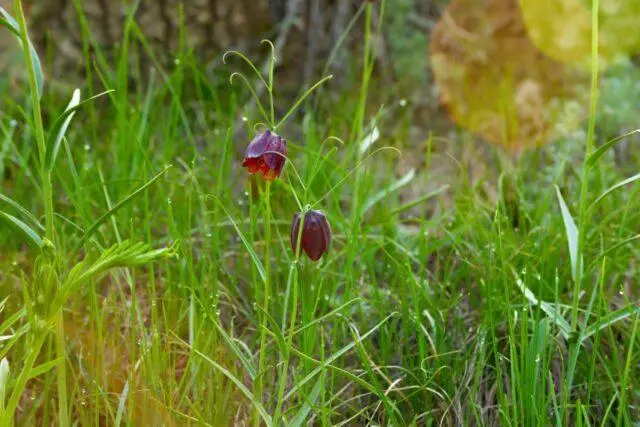
The hazel grouse has a short growing season
What does a hazel grouse look like
This herbaceous culture reaches a height of 50 cm. The shoots of the hazel grouse are thin, smooth, naked. In the upper part of them are thread-like pointed leaves, the ends of which are twisted in the form of a spiral. Thanks to this, the plant is able to cling to the stems of closely growing crops and thus hold on even with strong gusts of wind. The lower leaves of the hazel grouse are longer than the upper ones.
The root system is represented by bulbs, consisting of expanded bare scales, renewed annually.
The flowers of the hazel grouse are collected in apical inflorescences of 1-5 pieces. They also appear from the leaf axils. Perianths are bell-shaped, dark red on the outside with an indistinct checkerboard pattern of a darker shade. And inside they are yellowish with a green stripe on each lobe. The pistil of the hazel grouse is shorter than the stamens, divided into three stigmas up to the middle of the length. The flowering period begins in the first decade of April and lasts until May.
The fruits of the hazel grouse are hexagonal boxes, which are slightly narrowed down and have a blunt rounded top. They are 3,5 cm long and 1,8 cm wide.
Where grows
The plant is found in the European part of Our Country, Western Siberia, Central Asia in the Caucasus. The hazel grouse prefers to settle in meadows, on the edges of deciduous forests, along roads, and also near water bodies.
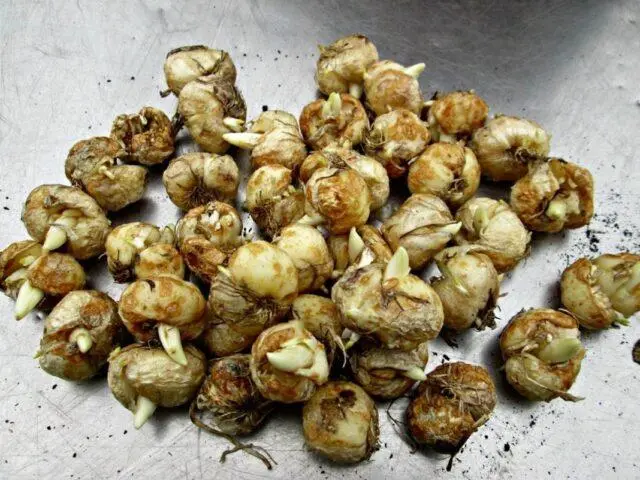
Grouse blooms when the bulb reaches a certain size
Cultivation
The hazel grouse is an unpretentious plant, but in order for it to successfully take root in a personal plot and delight with lush flowering every year, it is necessary to choose the right place for it and plant it. Therefore, you need to familiarize yourself with the requirements of the culture in advance, which will avoid serious mistakes.
Soil preparation
For culture, you need to choose a sunny open place. But it is also acceptable to grow a perennial in a slightly shaded area. However, in this case, the flowering period will come later.
hazel grouse prefers well-drained nutrient soil. The best option for him is sandy soil with a neutral level of acidity. Two weeks before planting, the site must be dug up and humus added at the rate of 10 kg per 1 sq. m. You can also plant hazel grouse in a loamy substrate, but then, in addition to organic matter, sand and peat must be added to it in a proportion of 5 kg per meter of area. At the end, the area must be leveled.
Landing technology
hazel grouse bulbs do not have an upper protective layer and are susceptible to any mechanical damage, so care must be taken when planting. Before planting them in a permanent place in open ground, it is recommended to soak for ten minutes in a pink solution of potassium permanganate, and then rinse with plain water.
It is necessary to plant a perennial in open ground at the end of August, at the beginning of September. For planting, prepare holes at a distance of 15-20 cm from each other. Their depth should be three times the size of the bulb. At the bottom of each recess, pour a layer of coarse-grained sand 1,5-2 cm thick. And on top you need to put a hazel grouse bulb, tilting it slightly to one side. This will eliminate the possibility of moisture accumulation between the scales.
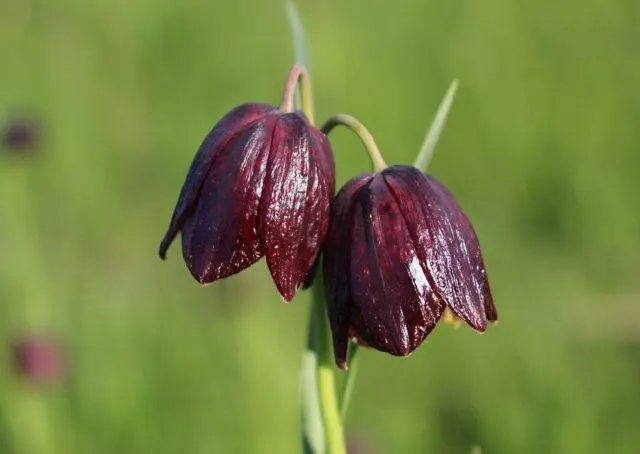
If the bulb is not deep enough when planting, the plant may not bloom.
Care
The hazel grouse reacts badly to the stagnation of moisture in the soil and its lack. Therefore, it should be watered as needed when there is no rain for a long time. To do this, use settled water with a temperature of + 18-20 ° C. Watering frequency – 1-2 times a month. After flowering, moisturizing should be continued, as the leaves nourish the bulb. Watering can be stopped at the stage of sharp withering of the aerial part of the plant.
The hazel grouse needs to be fed twice per season. The first time to fertilize a plant is necessary during the active growing season in the spring. At this time, you can use nitroammophoska at the rate of 30 g per 10 liters of water. The second dressing for the culture is recommended immediately after flowering. At this time, the use of superphosphate 40 g and potassium sulfide per bucket of water is relevant. These fertilizers contribute to the restoration of spent forces and accelerate the development of the bulb.
How it breeds
hazel grouse can be propagated by seeds, dividing the bulb and children. Each of these methods has features that need to be considered.
Seeds
For perennial propagation, it is necessary to sow seeds in open ground immediately after the pods have dried. This is recommended to be done in furrows 10 cm wide and 1 cm deep, on the bottom of which a thin layer of sand is poured. After that, water the area by sprinkling and sprinkle the surface of the soil with peat. Perennial shoots will appear only next spring. And these hazel grouse will bloom for 5-7 years.
dividing the bulbs
A flower can be propagated in this way only if there are large bulbs. To do this, they must be cut in half, and then slightly dried and sprinkled with wood ash. After this, the delenki should be immediately planted in a permanent place so that they have time to take root before the onset of cold weather.
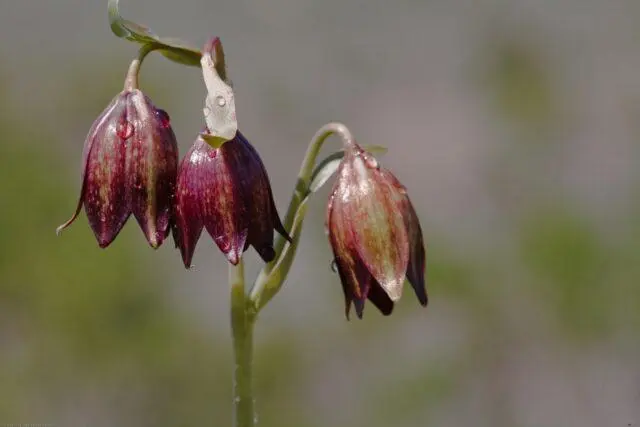
When dividing the bulbs, the hazel grouse blooms the next season
babes
As the hazel grouse grows, children form around it, which subsequently begin to interfere with each other. Therefore, it is recommended to plant a perennial every 3-4 years. This should be done immediately when the aerial part of the plant begins to dry out. To do this, you need to carefully dig up the plant and separate the daughter bulbs from it.
After that, they must be placed in a wet mixture consisting of sand and peat in equal amounts. And at the end of August, the children need to be planted in a permanent place in the open ground.
Diseases and pests
hazel grouse may suffer from pests. Damage to the plant is caused by a lily rattle. The insect has a red body and a black head. To eliminate it, it is necessary to spray the plant with Aktellik.
Also, the hazel grouse is attacked by a root mite, which damages its underground part. In this case, the affected bulb stops developing. To combat the pest, you need to spray and water perennial plantings.
This culture, if the growing conditions do not match, is affected by rust. The disease is manifested by a brown coating on the leaves. In this case, the plant stops developing and flowering. To solve the problem, you need to spray the perennial with Bordeaux mixture or Fundazol.
With stagnant moisture, fungal infection of the bulbs is also possible. In this case, it is necessary to dig them up, separate healthy specimens and lower them for half an hour in Maxim’s solution. And then drop off to a new location.
Use in landscape design
This unique plant is able to successfully complement any landscape design and emphasize its sophistication. And how spectacular the hazel grouse flower looks in monoplants can be seen in the photo. Such compositions are suitable for rockeries, alpine slides. The plant can also be used to create color accents in small flower beds.
Successful combinations with such colors:
- hyacinths;
- crocuses;
- tulips;
- forget-me-nots;
- muscari
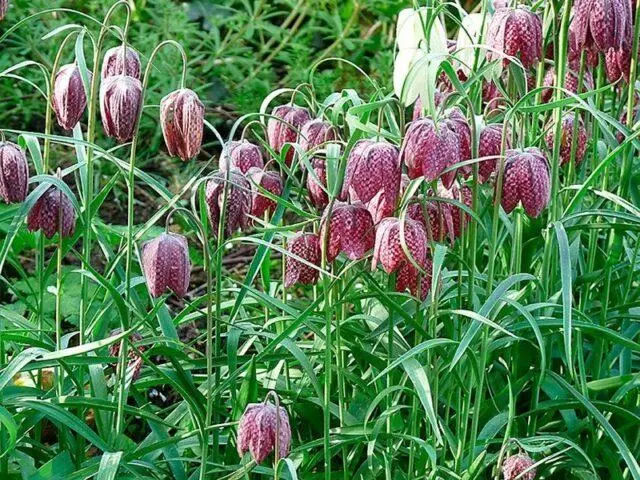
hazel grouse can be combined with early flowering spring crops
Conclusion
hazel grouse is a unique plant that is on the verge of extinction. If he appeared on a personal plot, then it is necessary to try to create the most favorable conditions for its development and reproduction in order to save it for posterity.










